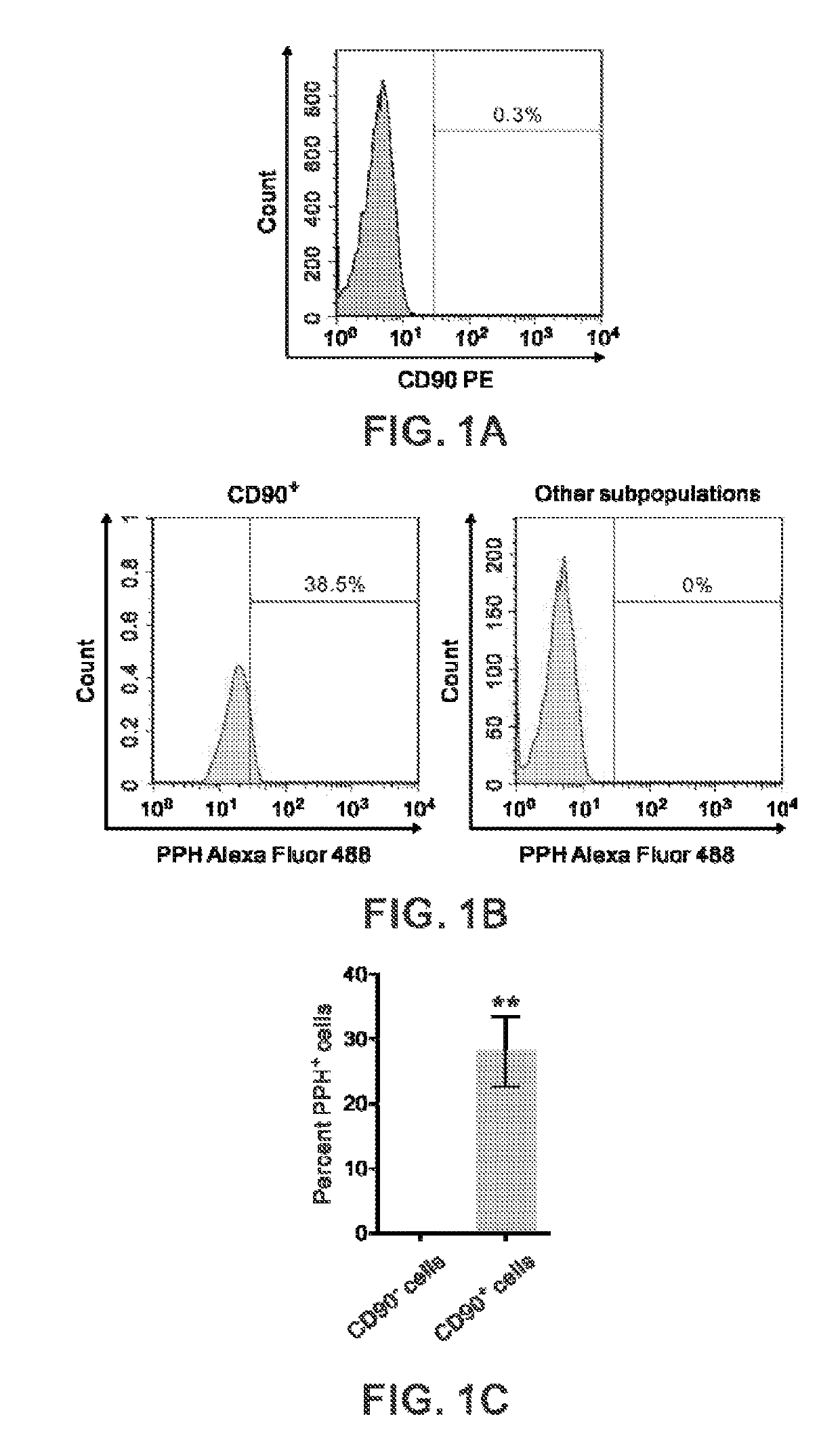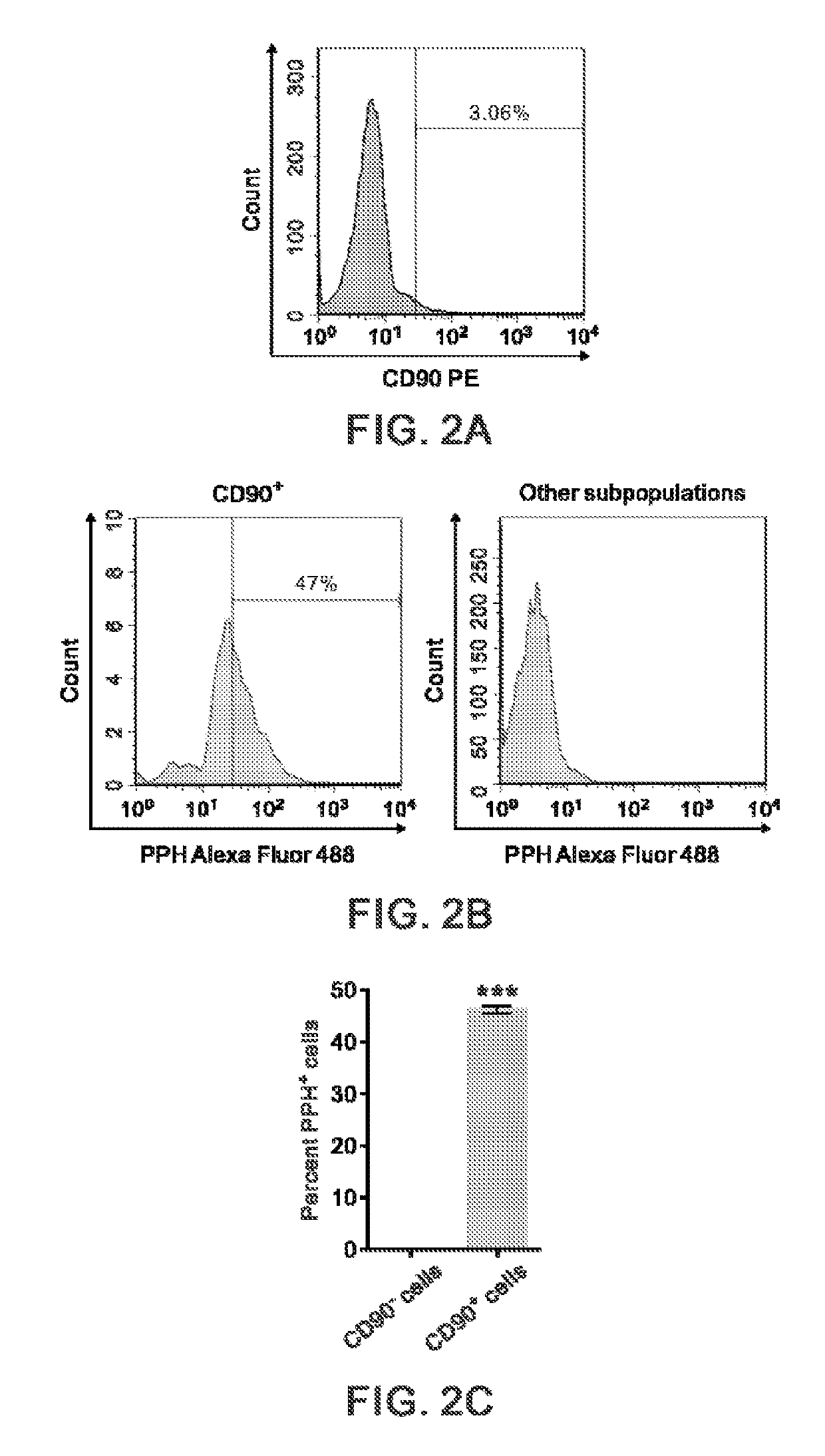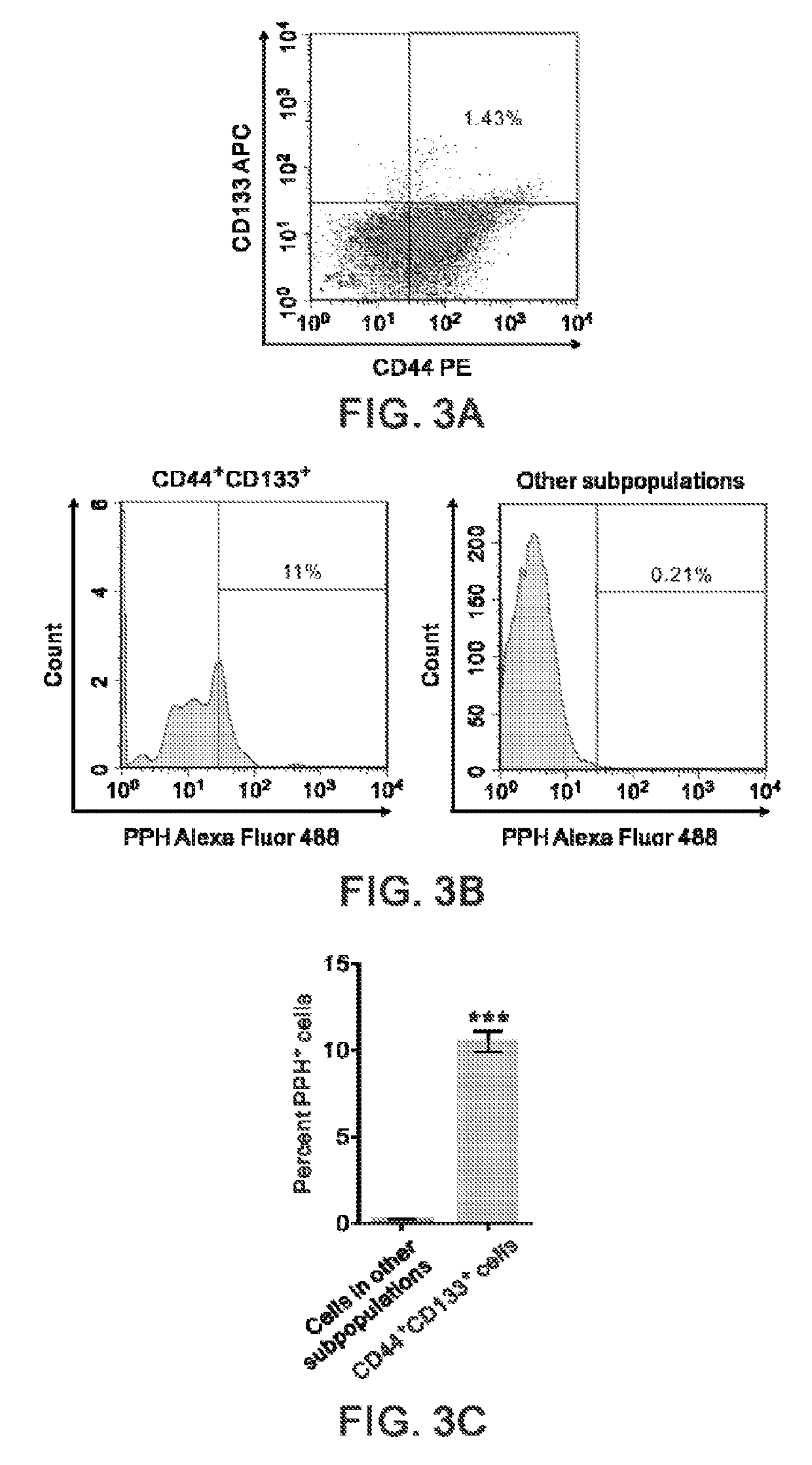A novel invadopodia-specific marker of invasive cancer stem cells and the use thereof
a cancer stem cell and invadopodia technology, applied in the field of invadopodia-specific markers of invasive cancer stem cells, can solve the problems of ineffective eradication of limitations of current cancer therapies, and inability to effectively kill solid cancer stem cells, and achieve high likelihood of invading and high likelihood of causing severe damag
- Summary
- Abstract
- Description
- Claims
- Application Information
AI Technical Summary
Benefits of technology
Problems solved by technology
Method used
Image
Examples
example 1
[0110]This example describes that cell-surface PPH marks a subpopulation of CSCs in gastric cancer and prostate cancers.
[0111]We analyzed the expression of cell surface PPH in gastric cancer and pancreatic cancer cells by the fluorescence-assisted cell sorting (FACS) analysis. We measured the proportion of primary gastric cancer-derived AGS cells (American Type Culture Collections) and metastatic gastric cancer SNU-16 cells (American Type Culture Collections) that expressed the surface marker CD90, which have been shown to contain the enriched CSCs in gastric cancer (Jiang et al., 2012). We also measured the proportion of primary prostate cancer-derived 22Rv-1 cells and metastatic prostate cancer-derived PC-3 cells (both from American Type Culture Collections) that expressed that surface markers CD133 and CD44, which have been shown to contain the enriched CSCs in prostate cancer (Dubrovska et al., 2009; Richardson et al., 2004). For the FACS analysis, cells were dissociated, antibo...
example 2
[0114]This example describes that cell-surface PPH marks a subpopulation of CSCs in malignant glioma and bladder cancer.
[0115]We analyzed the expression of cell surface PPH in malignant glioma and HCC cells by the FACS analysis. I measured the proportion of two malignant glioma (glioblastoma) cell lines, U-87MG and Hs-683 cells (both obtained from American Type Culture Collections) that expressed the surface marker CD133, which have been shown to contain the enriched glioma stem cells (Singh et al., 2004). We also measured the proportion of the bladder cancer line T24 (obtained from American Type Culture Collections) that expressed that surface marker CD44, which have been shown to contain the enriched CSCs in bladder cancer (Chan et al., 2009). For the FACS analysis, cells were dissociated, antibody-labeled (1-2 μg per 106 cells×1 hour) and resuspended in HBSS / 2% FBS as previously described (Hermann et al., 2007; Li et al., 2007). The antibodies used included APC-anti-CD133 (Milten...
example 3
[0117]This example describes that cell-surface PPH marks a subpopulation of LSCs in acute myeloid leukemia.
[0118]We analyzed the expression of cell surface PPH in AML cells by the FACS analysis. I measured the proportion of AML THP-1 cells and HL-60 cells (both obtained from American Type Culture Collections) that expressed CD34 but lacked the expression of CD38, which have been shown to contain the enriched LSCs in AML (van Rhenen et al., 2005). For the FACS analysis, cells were dissociated, antibody-labeled (1-2 μg per 10.sup.6 cells×1 hour) and resuspended in HBSS / 2% FBS as previously described (Hermann et al., 2007; Li et al., 2007). The antibodies used included FITC-CD34, APC-CD38 (both from BD Biosciences) and anti-PPH (PAS-12051; Thermo Scientific) in conjunction with Alexa Fluor 488-anti-mouse IgG (Invitrogen). Flow cytometry was done using a FACSAria III (BD Biosciences).
[0119]As shown in FIGS. 7A-7C, the majority (77.3% on average) of CD34.sup.+.CD38.sup.−. THP-1 cells wer...
PUM
| Property | Measurement | Unit |
|---|---|---|
| size | aaaaa | aaaaa |
| size | aaaaa | aaaaa |
| affinity | aaaaa | aaaaa |
Abstract
Description
Claims
Application Information
 Login to View More
Login to View More - R&D
- Intellectual Property
- Life Sciences
- Materials
- Tech Scout
- Unparalleled Data Quality
- Higher Quality Content
- 60% Fewer Hallucinations
Browse by: Latest US Patents, China's latest patents, Technical Efficacy Thesaurus, Application Domain, Technology Topic, Popular Technical Reports.
© 2025 PatSnap. All rights reserved.Legal|Privacy policy|Modern Slavery Act Transparency Statement|Sitemap|About US| Contact US: help@patsnap.com



